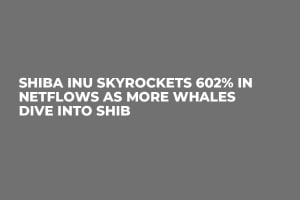
Disclaimer: The opinions expressed by our writers are their own and do not represent the views of U.Today. The financial and market information provided on U.Today is intended for informational purposes only. U.Today is not liable for any financial losses incurred while trading cryptocurrencies. Conduct your own research by contacting financial experts before making any investment decisions. We believe that all content is accurate as of the date of publication, but certain offers mentioned may no longer be available.
Dog-themed cryptocurrency Shiba Inu captured attention at the start of March start with its sterling 300% rally, which pushed up its rankings among major cryptocurrencies.
Shiba Inu (SHIB) entered profit-taking shortly after reaching highs of $0.00004575 on March 5, with the declines persisting until press time. At the time of writing, SHIB was down 11% in the last 24 hours to $0.000025, mirroring the general declines on the market.
Bitcoin fell as much as 10% on Tuesday, dipping to lows of $62,438 amid bearish sentiment as Grayscale Bitcoin Trust, or GBTC, experienced a $643 million outflow on Monday, the most since it transitioned into an ETF on Jan. 11. The majority of cryptocurrencies also plummeted alongside Bitcoin's dip.
Amid the current downturn, on-chain data indicates a notable absence of Shiba Inu whales, coinciding with a decline in large transaction volume. Whales, a term used to describe holders of large amounts of a particular cryptocurrency, often play a significant role in shaping market dynamics through their buying and selling activities. The decrease in the activity of Shiba Inu whales can be seen, as the volume of large transactions remains substantially low.
Large transaction volumes, which are indicative of whale activity, either buying or selling, have seen a general decline since March 5.
According to IntoTheBlock data, Shiba Inu's large transaction volume has declined 37.47% in the last 24 hours, amounting to $227.11 million, or 8.47 trillion SHIB in crypto terms.
The decline in large transaction volume could be interpreted in several ways: it might be a temporary lull in whale activity, with large holders potentially biding their time before reentering the market.
Additionally, the absence of significant whale activity may also be viewed as an opportunity for retail investors to assert their influence within the Shiba Inu ecosystem. With fewer large transactions occurring, retail investors may find themselves in a position to have a greater impact on price movements and market dynamics.


 Dan Burgin
Dan Burgin Vladislav Sopov
Vladislav Sopov U.Today Editorial Team
U.Today Editorial Team